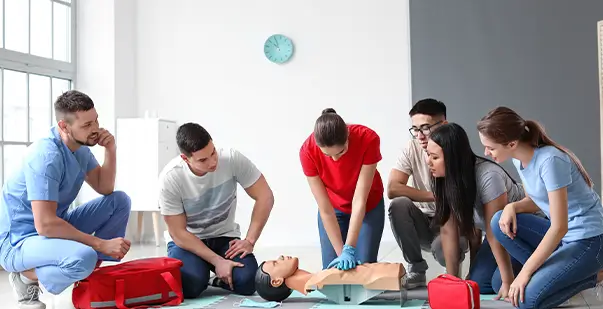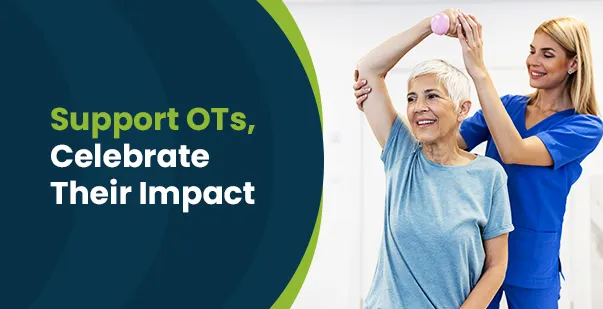If you want to learn how to save a life during a medical emergency, you should take AED and CPR training near you. AED stands for automated external defibrillator, and CPR stands for cardiopulmonary resuscitation. These are skills that can help healthcare professionals in case someone has a cardiac arrest, which means their heart stops beating.
Searching for “CPR classes near me” is very easy. American HealthCare Academy offers a flexible and convenient CPR AED online combo course for anyone who can’t accommodate a classroom learning program in their schedule and aims to be CPR certified. In this course, life-saving skills meet convenience. With our comprehensive CPR AED online training and certification program, learners and healthcare professionals can gain the knowledge and confidence to respond swiftly in emergencies. Learn at your own pace, enhance your skills, and become CPR certified today!
How to Take AED and CPR Training Near Me?
Many organizations offer AED and CPR training near you. You can search online for courses in your area or ask your local hospital, fire department, or community center. Taking these courses can equip you with essential life-saving skills, increasing a victim’s chance of survival. Let’s explore the steps to finding a nearby provider and starting your training journey.
1. Research local providers: Begin by researching local healthcare organizations, community centers, and training institutes that offer AED and CPR courses. You can use search engines or ask for recommendations from friends, family, or colleagues who have taken such training before.
2. Check course availability: Once you have a list of potential providers, visit their websites or contact them directly to inquire about the availability of AED and CPR first aid training courses. Ask about the course schedule, duration, and any prerequisites that may be required.
3. Compare courses: Take the time to compare the different courses offered by various providers. Look for courses that are comprehensive, accredited, and recognized by different boards and regulatory organizations. Ensure that the course covers both AED and CPR techniques.
4. Consider convenience: Evaluate the convenience factor by considering the location of the training center. Look for providers that are close to your home or workplace, as this will make attending the training sessions easier.
5. Enroll in the course: Once you have chosen a provider and a course that suits your needs, contact the provider to enroll in the training. They will guide you through the registration process and provide you with any necessary materials or instructions.
6. Attend the training: On the scheduled day, make sure you arrive on time and are prepared for the training. Wear comfortable clothing and be ready to actively participate in the hands-on practice sessions.
7. Complete the certification: After completing the training, you will usually receive a certification that validates your skills. This certification may be required for certain jobs or as a prerequisite for further medical training.
How are AED and CPR Training Sessions Effective?
AED and CPR training sessions are vital as they teach theoretical and practical aspects of life-saving techniques. Participants gain the skills to recognize the signs of cardiac arrest, call for emergency assistance, perform chest compressions and rescue breaths, and efficiently handle AED devices. Hands-on training on mannequins further enhances the confidence of trainees in their abilities.
AED and CPR training sessions provide practical knowledge on how to respond promptly and effectively during emergencies. By learning how to use an AED and perform CPR, participants gain the ability to provide crucial aid to someone experiencing sudden cardiac arrest. These training sessions emphasize the importance of early intervention and proper technique, instilling confidence in participants to act confidently in critical situations. Regular practice and hands-on demonstrations ensure that participants and healthcare professionals develop the necessary skills and muscle memory to perform CPR and use an AED correctly.
Steps to Use AED in CPR Emergency Cases
If you encounter someone who has a cardiac arrest, you should follow these steps:
1. Check if the person is responding and has a normal breathing pattern. If not, call 911 or ask someone else to do it.
2. Start CPR by pushing hard and fast on the center of the chest, at a rate of 100 to 120 compressions per minute. Give two rescue breaths after every 30 compressions, if you are trained and willing to do so.
3. If an AED is available, turn it on and follow the voice prompts. The AED will analyze the person’s heart rhythm and tell you if a shock is needed or not. If a shock is needed to be delivered, ensure that no one is touching the person including you, and press the shock button.
4. Continue CPR until the person shows signs of life, such as breathing, coughing, or moving, or until emergency services arrive.
Conclusion
Learn CPR/ AED and get prepared to save a life in case of cardiac emergencies. You can find courses near you online or through local organizations. When you become CPR certified, you will know how to perform CPR and use an AED device effectively. Remember to act quickly and follow the steps above if you encounter an emergency.









